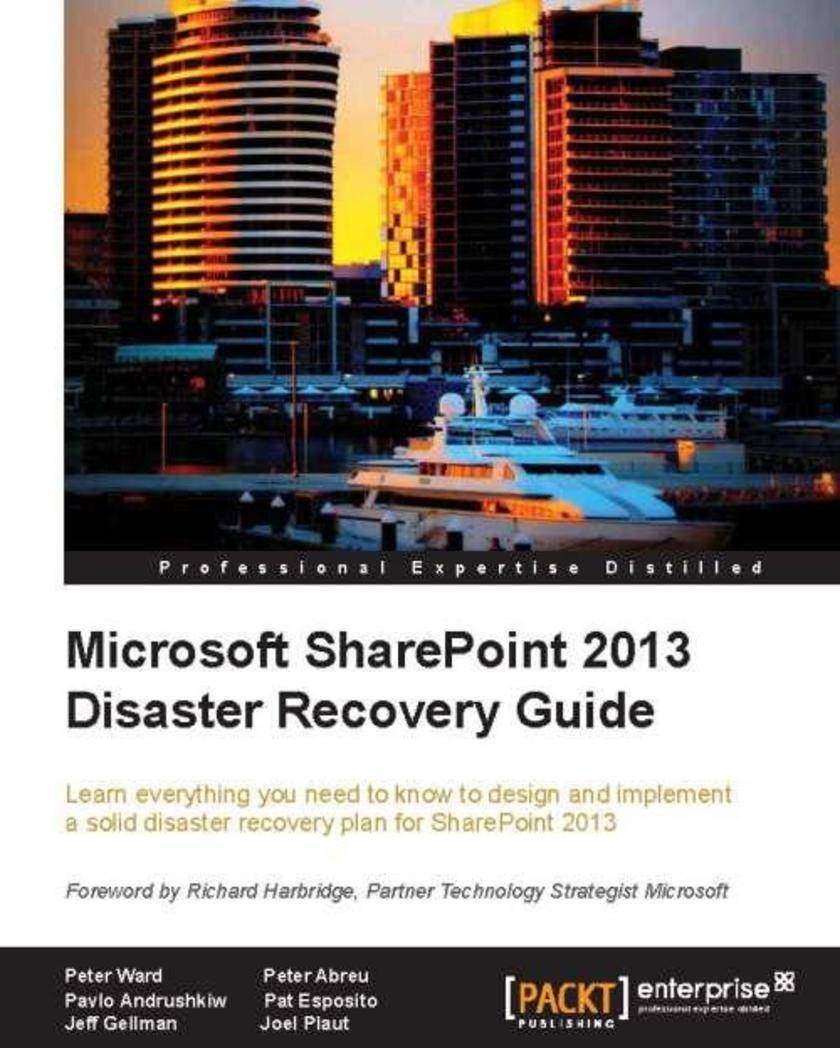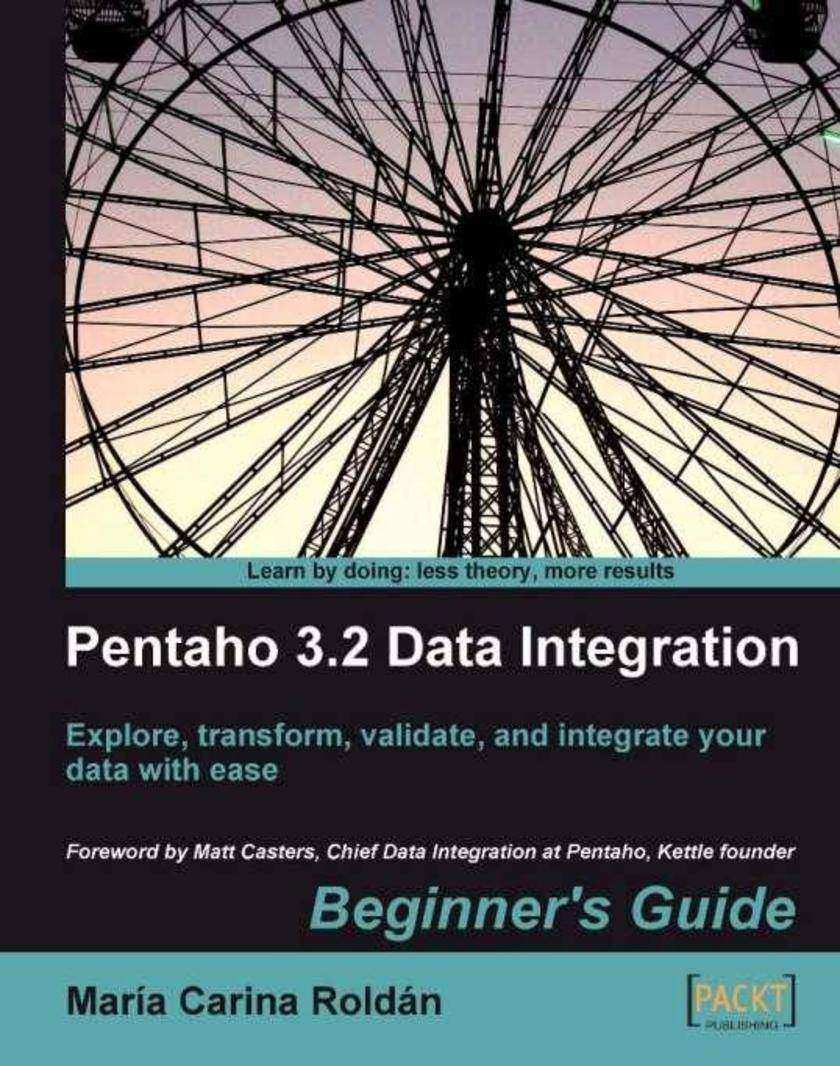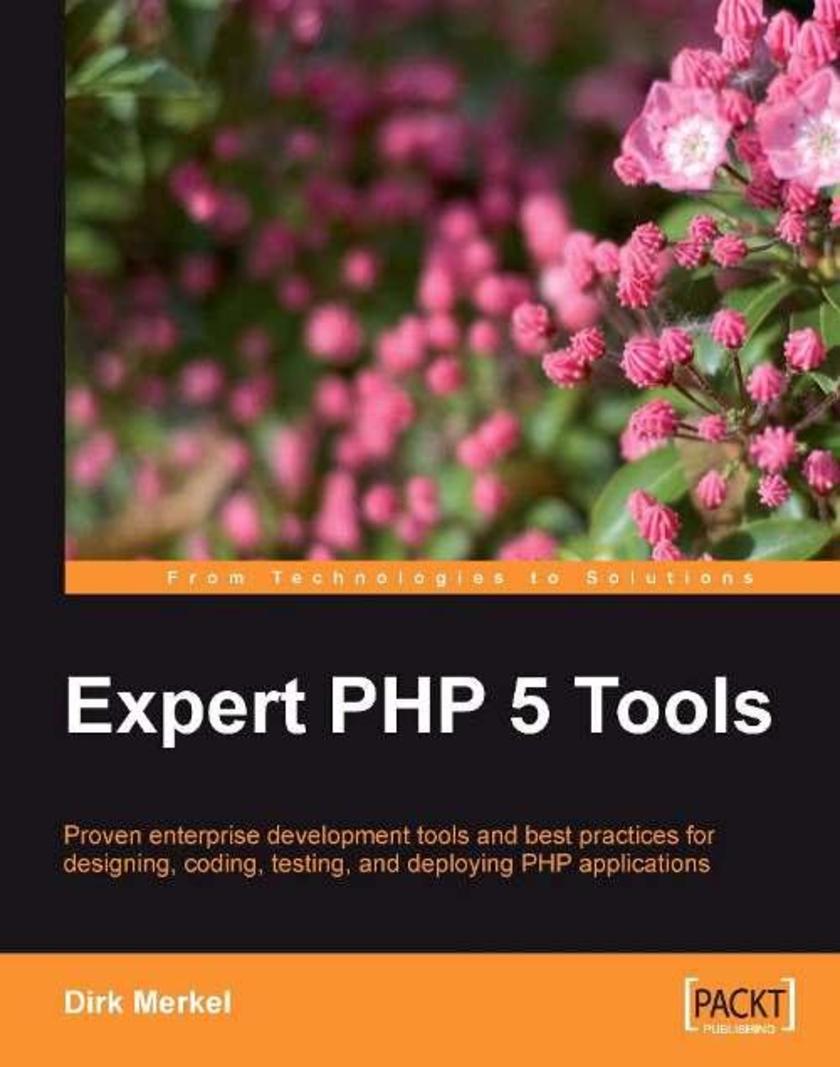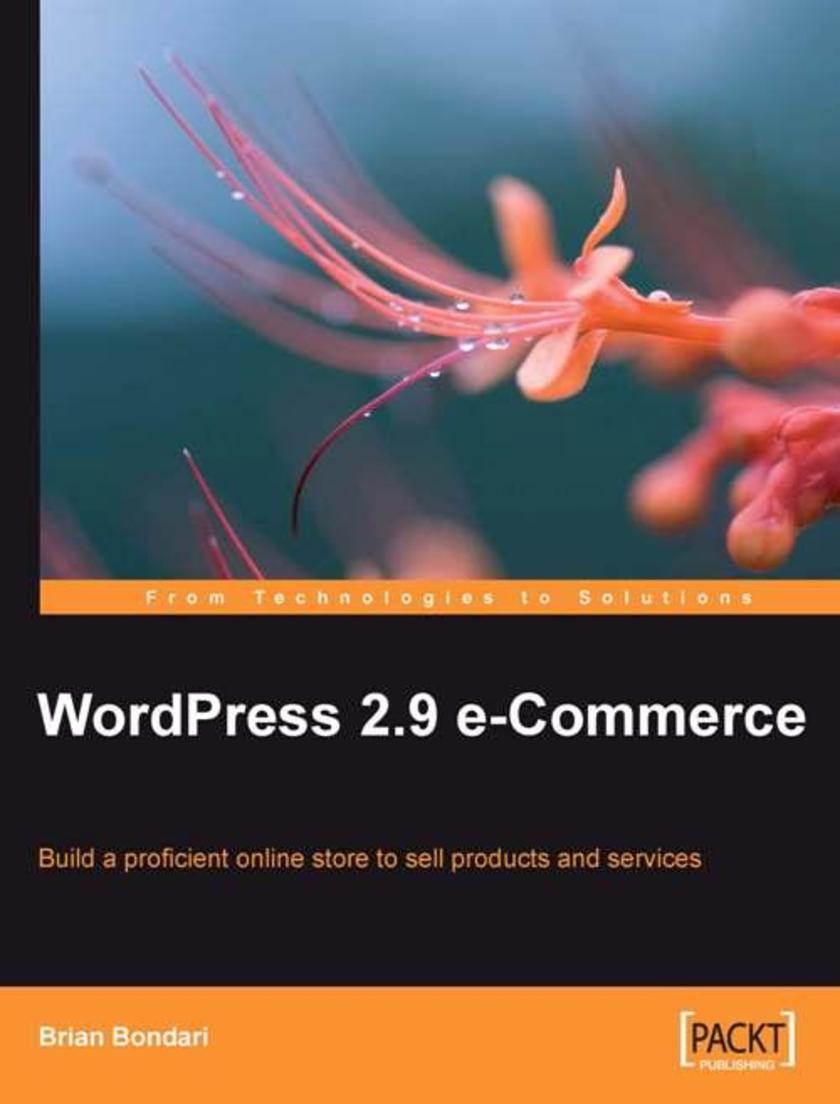
Lift Application Development Cookbook
¥80.65
Lift Application Development Cookbook contains practical recipes on everything you will need to create secure web applications using this amazing framework.The book first teaches you basic topics such as starting a new application and gradually moves on to teach you advanced topics to achieve a certain task. Then, it explains every step in detail so that you can build your knowledge about how things work.This book is for developers who have at least some basic knowledge about Scala and who are looking for a functional, secure, and modern web framework. Prior experience with HTML and JavaScript is assumed.

Microsoft SharePoint 2013 Disaster Recovery Guide
¥80.65
The style and approach of the book is an easytoread SharePoint admin guide. This is not a stepbystep instruction book, but rather a guide on how to implement and execute a disaster recovery plan to your SharePoint environment.This book is great for both SharePoint and SQL administrators new to the SharePoint 2013 architecture, and who are looking to get a good grounding in how to use implement a solid disaster recoveryrecovery plan. It's assumed that you have some experience in SharePoint and Windows Server and, as well be familiar with SQL.

Instant PageSpeed Optimization
¥45.77
Filled with practical, step-by-step instructions and clear explanations for the most important and useful tasks. Instant PageSpeed Optimization is a hands-on guide that provides a number of clear, step-by-step exercises for optimizing your websites for better performance and improving their efficiency.Instant PageSpeed Optimization is aimed at website developers and administrators who wish to make their websites load faster without any errors and consume less bandwidth. It’s assumed that you will have some experience in basic web technologies like HTML, CSS3, JavaScript, and the basics of networking, as well as knowing how to edit Apache configuration.

Microsoft Dynamics NAV 7 Programming Cookbook
¥99.18
Written in the style of a cookbook. Microsoft Dynamics NAV 7 Programming Cookbook is full of recipes to help you get the job done.If you are a junior / entry-level NAV developer then the first half of the book is designed primarily for you. You may or may not have any experience programming. It focuses on the basics of NAV programming.If you are a mid-level NAV developer, you will find these chapters explain how to think outside of the NAV box when building solutions. There are also recipes that senior developers will find useful.

ServiceDesk Plus 8.x Essentials
¥71.93
This is a practical, hands-on guide that assists you in setting up and efficiently managing ITSM.ServiceDesk Plus 8.x Essentials is for IT helpdesk managers, administrators, and staff, serving as a compendium for service management concepts useful for them.

Microsoft Dynamics GP 2010 Cookbook
¥107.90
As a cookbook, this book enables you to solve real-world Dynamics GP problems with immediately useable recipes that unleash the powerful functionality of Dynamics GP. The book provides tips, techniques, and solutions designed to show users how to improve their use of Dynamics GP, not simply perform basic tasks. If you are a Dynamics GP user or Dynamics GP partner primarily focused on delivering time-proven application optimizations, then this book is for you. This book assumes that you have a basic understanding of business management systems, with basic knowledge of Microsoft Dynamics GP. All the recipes are real-world tested and designed to be used immediately.

Tcl 8.5 Network Programming
¥90.46
The book is written so that both experienced and novice Tclers can find useful information inside. It starts with quick introduction to Tcl and its networking support for those who are less familiar with them. Authors focus on showing practical, yet simple examples for each module and command described so that reader understands how to use them when solving the real life problems. The examples given are useful programs that try to solve real-world needs. All sample programs are clear and concise yet nothing essential is left out and the programming style focuses on readability rather than on stylistic rigor or efficiency. This book is for Tcl developers with basic network programming concepts, who want to add networking capabilities to their applications. Working knowledge of Tcl and basic experience of network protocols will be useful. The reader should be familiar with basic concepts used in modern networking – keywords like TCP, HTTP or XML should not be a mystery. The book does not require advanced knowledge of Tcl – the first chapters will swiftly introduce the reader into it, allowing refreshing the information or gaining a quick overview of the Tcl language abilities.

PrestaShop 1.3 Beginner's Guide
¥80.65
The book is structured so that following the chapters in order leads to building a fully functioning and live trading PrestaShop. Guidance is also given should you wish to learn or practice your skills in an offline, non-trading environment. Every chapter contains clearly structured and illustrated step-by-step explanation to achieve the goals discussed. Nothing is left for readers to work out themselves, but it would be very simple for them to use the information to go beyond the specific tutorials, should they wish to do so. There is optional additional reading, including more than a dozen specifically written downloadable e-books made available on the book's support website just for readers of PrestaShop 1.3 Beginners Guide. This book is for anybody who wants a fully functioning e-commerce store using PrestaShop. You do not have to have any previous knowledge of PrestaShop or any aspect of e-commerce or business in general. If you do, then you will probably find this guide really valuable as well. The book covers all you need to know about starting your own e-commerce business.

IT Inventory and Resource Management with OCS Inventory NG 1.02
¥71.93
This book closely follows the style of a practical, hands-on "how to" guide on working with OCS Inventory NG. The step-by-step approach, coupled with the use of visual aids, clear instructions, and real-world examples, makes it a fast-paced book. Upon the completion of this book, you will have the necessary skill set, know-how, and confidence to implement OCS Inventory NG to meet the demanding asset management needs of any organization. Then you can carry on using the book as reference material. This book targets an audience of system administrators and IT professionals who are required to implement, configure, customize, and work with IT Inventory and Asset Management solutions. The book does not presume any prior knowledge of inventory management, just a solid grasp of the server/client model and familiarity with the chosen operating system along with the necessary web server and database server terminologies. Anyone with an interest in inventorying IT assets and solving real-world resource management dilemmas will enjoy this book.

TYPO3 4.2 E-Commerce
¥71.93
This is a fast-paced tutorial focusing on creating an online store. It walks in detail through development of a sample website, illustrating each step with screenshots and explanation. The cumbersome and time-consuming task of developing and customizing a TYPO3 e-commerce site will be a smooth sail with this book. If you want to create a captivating online shop using TYPO3 and optimize your profit, this book is for you. Some knowledge of TYPO3, PHP, and TypoScript is required.

High Availability MySQL Cookbook
¥80.65
This book uses the approach of a cookbook. Each recipe provides the reader with easy step-by-step de*ions of the actions necessary to accomplish a specific task. It is designed to present what often appear as extremely complicated techniques as a series of simple-to-follow recipes, allowing readers to achieve high uptimes on their MySQL servers. This book is targeted at system administrators or database administrators who have basic familiarity with Linux, the shell, and MySQL. The typical user will be able to get MySQL installed and working, but needs practical guidance to make it highly available.

Microsoft Silverlight 4 Data and Services Cookbook
¥107.90
Written in a cookbook style, this book offers learning and techniques through recipes. It contains step-by-step instructions for developers who want to build rich data-driven business applications using Silverlight. The book is designed in such a way that you can refer to things chapter by chapter, or read them in no particular order. If you are a .NET developer who wants to build professional data-driven applications with Sliverlight, then this book is for you. Basic experience of programming Silverlight and familiarity with accessing data using ADO.NET in normal .NET applications is required.

Wordpress and Flash 10x Cookbook
¥71.93
This book consists of a series of easy-to-follow recipes. Each recipe stands on its own, so you can open the book to any recipe and complete it without going through the previous recipes. You can work through the book from start to end or just choose the recipes most applicable to your needs and situation. The book presents recipes of varying difficulty levels so that there is something for everyone from a beginner to an advanced WordPress user. Detailed screenshots, code examples, and links to additional resources supplement the concise instructions. If you are a Wordpress user interested in creating multimedia-rich websites and blogs using Flash then this book is perfect for you. This book caters for site administrators and web developers, who have experience using Flash aand Wordpress.

VirtualBox 3.1: Beginner's Guide
¥90.46
This beginner's guide consists of comprehensive explanation, appropriate screenshots, tips, tricks, and best practices. It offers step-by-step instructions on building your own virtual environment from scratch, supported by the reasoning behind what you do. If you are a System Administrator who has to set up a virtual machine and want to use an open source tool to do it this book will prove invaluable. No prior knowledge of VirtualBox is required, but you should have experience with general system administration.

Pentaho 3.2 Data Integration: Beginner's Guide
¥90.46
As part of Packt's Beginner's Guide, this book focuses on teaching by example. The book walks you through every aspect of PDI, giving step-by-step instructions in a friendly style, allowing you to learn in front of your computer, playing with the tool. The extensive use of drawings and screenshots make the process of learning PDI easy. Throughout the book numerous tips and helpful hints are provided that you will not find anywhere else. The book provides short, practical examples and also builds from scratch a small datamart intended to reinforce the learned concepts and to teach you the basics of data warehousing. This book is for software developers, database administrators, IT students, and everyone involved or interested in developing ETL solutions, or, more generally, doing any kind of data manipulation. If you have never used PDI before, this will be a perfect book to start with. You will find this book is a good starting point if you are a database administrator, data warehouse designer, architect, or any person who is responsible for data warehouse projects and need to load data into them. You don't need to have any prior data warehouse or database experience to read this book. Fundamental database and data warehouse technical terms and concepts are explained in easy-to-understand language.

Oracle Database 11g – Underground Advice for Database Administrators
¥90.46
This book is designed to cover the problems that novice DBAs particularly struggle with. This handbook covers a minimal amount of theoretical information before showing you how to overcome common problems through the use of real-life examples. It covers both Oracle 11g R1 and 11g R2 in examples, with material applicable to all versions of Oracle. This book is for you if you find yourself in charge of an Oracle database. It can be easy to feel overwhelmed. Whether you are a single employee or the DBA manager of several employees, whether you are taking over an existing position or taking up a newly created one – this book is designed to be a sanity check. If you need guidance for migrating to 11g or implementing Oracle's Maximum Availability Architecture, you will find this book very helpful.

Expert PHP 5 Tools
¥90.46
Each chapter focuses on one topic, such as version control or debugging. After initially discussing essential concepts, the author takes an in-depth look at one or more tools relevant to the topic. Sample projects and plenty of well-documented code are used to work through practical application of the concepts. This book has been written for professional developers new to PHP and experienced PHP developers who want to take their skills to the next level by learning enterprise-level tools and techniques.

WordPress 2.9 E-Commerce
¥80.65
This book provides an easy to understand, step-by-step approach to installing, configuring, and using WP e-Commerce to run your online store. We will construct an example store in the book with enough information and flexibility to adapt the store to your specific needs. This book is for you, if you are interested in using WordPress as the basis for a store that can sell physical items, downloads, or services. It is ideal for a sole proprietor or small business owner with only basic, in-house technical skills. Some prior knowledge of WordPress will help, but is not required. No knowledge of PHP is expected, but it will also be helpful.

Joomla! 1.5: Beginner's Guide
¥80.65
Written with a fast-paced but friendly and engaging approach, this Packt Beginner's guide is designed to be placed alongside the computer as your guide and mentor to meet real-world web building challenges. Step-by-step tutorials are bolstered by explanations of the reasoning behind what you are doing. You will quickly pick up the necessary skills, tips, and tricks for building a successful Joomla! web site with practical examples that help you to learn by experiment and play. If you want to build and maintain your own web site, the Joomla! Beginner's Guide is perfect for you. It helps you build on the skills and knowledge you may already have on creating web sites—but even if you're new to this subject, you won't have any difficulty understanding the clear and friendly instructions and explanations. You learn how to build and maintain web sites without having to dive deep into HTML and CSS.

GlassFish Administration
¥80.65
This book provides an in-depth tutorial on administering the GlassFish application server. Every chapter starts with a clear discussion of the involved concepts, followed by step-by-step instructions on how to perform the administrative task. Clear illustrations and complete working code examples are used to help you visualize the relevant topics. If you are a Java EE application developer and architect who builds and deploys Java EE, Ruby on Rails, and other supported applications for the GlassFish Application Server, then this book is for you. This book is also very valuable if you are an administrator responsible for maintaining the GlassFish Server runtime. Basic knowledge of Java EE 5 is assumed but you need not have any previous knowledge of GlassFish. Those who already know the basics of GlassFish will still find this book useful as they will gain knowledge of administration tasks.

Blender 3D 2.49 Incredible Machines
¥80.65
This book presents practical tutorials and focuses on fun projects. It contains a lot of serious training material, but is presented in a fun and entertaining way. This book targets game designers/developers, artists, and product designers who want to create realistic images, 3D models, and videos of machines. You are expected to have experience with basic Blender operation, as the book is not a 'getting started' tutorial.




 购物车
购物车 个人中心
个人中心



